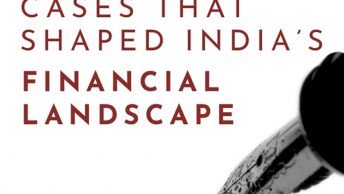From the snowy cornices of Himalayas to the arid soils of Koh e Siyah to the islands floating in the Arabian Sea is the geographical stage of South Asia. A region of eight modern states under the umbrella of SAARC. In terms of territory, the region is small. It occupies only around 3% of the total land of the earth. However, it is big in many crucial terms. Putting aside the fact that this region houses nearly one fourth of the world’s total population, one should appreciate the diversity, intricacy, and complexity in political orders and their histories. Be one an enthusiast to understand the region or one who is particularly interested in histories of its constitutions and constitutionalism, they shall find the book Constitutional Foundings in South Asia an invaluable guide. It is published from Hart Publishing and edited by two renowned constitutional law professors— Kevin YL Tan at National University of Singapore and Ridwanul Hoque at the University of Dhaka and Charles Darwin University (Australia).
The volume has intuitively and objectively punctuated an appropriate place of history. It is about the founding constitutions of the eight South Asian states. Unlike many other regions, the diverse and vibrant histories of constitutionalism in the region are less explored. This book dares to make such an exploration and without failing. Each page of the volume accompanies the reader in that exploration through fascinating stories told with academic rigour.
The book powerfully reminds that history matters for understanding constitutionalism. It does not tell the history in a comfortable distance from the past. Rather, it looks into history to locate the foundings of constitutionalism and their evolution in the SAARC countries. The book critically investigates the region’s shared history of colonialism, except in cases of Nepal and Bhutan, as a source of their many tumults in law and politics. Blending the constitutional law scholarship with historiography and political science, this volume draws the region’s map of constitutionalism. The detailed map is drawn on the basis of three outlines – the process and contents of making the modern constitutions, internal and external factors in their foundings, and the role of those founding constitutions in state-building and taking their constitutional laws forward.
Countries like Afghanistan, Bhutan, and the Maldives have their place in the region, but they are usually not noticed by comparative constitutional lawyers or historians either from within the region or beyond. This is where the worth and the singularity of this book on constitutional founding histories of South Asian nations lies. This is not the only unique aspect of it. The volume explores the South Asian constitutional foundational histories in a coherent way which surely will enhance our understanding of South Asian constitutionalism. The book will also help us appreciate and critically locate the potential trajectories of constitutional futures of the region. In doing so, the book provides theoretical models for any such future endeavor, telling us that constitutional future is to be planned with a poised reference to the constitutional past.
Introductory chapter draws from ancient classical theorists like Cicero to contemporary Bruce Ackerman to show why history, that is of founding constitutions in this case, matters. Founding moments express the values for which the countries decolonized and emerged as independent entities. The book identifies one non-obvious character of these constitutions: that the founding values were not necessarily liberal. This goes against the idea that constitutionalism is inevitably a process of liberalism. The book also shows that revolutionary moments of founding in this region are not necessarily a radical denouncement of the past, but rather are a continuity including a continuity of the colonial pasts in some cases.
Even though the book draws from the classical and contemporary theories, the editors do not confine their analysis in just ‘any particular theoretical or dialectical model of constitutionalism.’ Thus, the particularistic narratives of the founding constitutions, though not completely non-transcendental, trace their legacies in ‘the ideas, forces, and inspirations for constitutional debates and mobilisation’ in these countries. Each chapter is packed with examples of endurance of, as well as deviances from, the founding values the constituent people cherished.
The uncommon journey of the three countries of the so-called Indian subcontinent—Bangladesh, India, and Pakistan—from a common colonial past, is quite interestingly covered in this volume. The narratives on these countries affirm that their constitutional foundings were not a total negation of the colonial legal and political structure in favour of a liberal political order, but yet provide the values that shaped their later histories of constitutionalism in different ways. The question of realization of the constitutional values remains a common factor in these countries. However, the birth of Bangladesh in 1971 is rooted, among other things, in disagreements about the founding values of Pakistan’s 1956 constitution. The founding constitutions in Bangladesh and Pakistan have been the yardsticks to measure unfortunate deviations from constitutional values. The deviations sometimes take shape of civilian authoritarianism in both countries.
Undoubtedly, the book is a significant contribution to the study of South Asian constitutional histories generally and comparative constitutionalism in particular.





Your article helped me a lot, is there any more related content? Thanks!